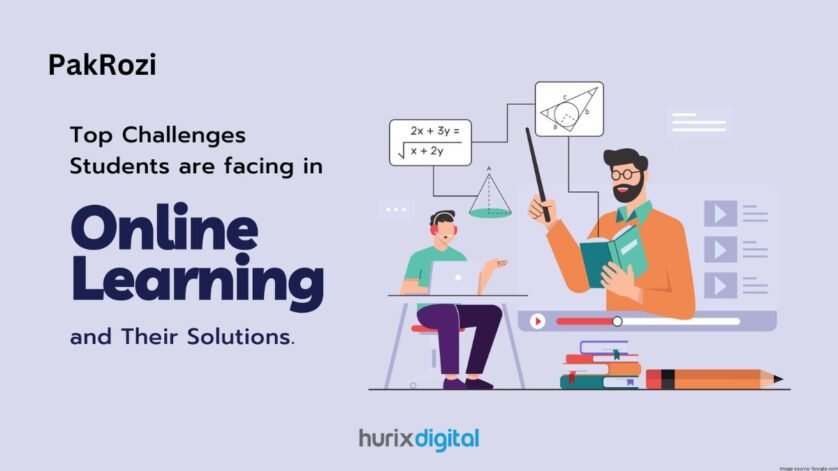Teaching has become the most important part of education, but it also presents various problems. From maintaining the engagement of students to managing technology issues, online teaching poses numerous challenges and requires careful planning and adaptability. Here are practical tips on how educators can succeed in the online teaching environment.
Table Of Contents
Handle Technology
One of the important social challenges that online teachers must resolve is to learn mastering the digital tools for learning. Zoom, Microsoft teams, or even Google Classroom now built-in applications in a virtual classroom setting. Teachers must be in tune with these tools on the feature level and employ them adequately to engage students.
- Utilize all the tutorials, webinars, or online courses targeted in teaching with technology to better digitize your skills.
- Test that software before each class to fight back the potential problems.
Transparent Communication
In traditional classrooms, face-to-face presence is also advantageous for communication. Thus, online teaching has a huge requirement in understanding any expectations for communication. The teachers thus should pay attention to the office hours and respective e-guidelines for meetings that they set on the communication with students.
- Respond to student inquiries immediately and organize regular visits for them so that they feel highly motivated.
- Formulate clear rules about the expected behavior of students in virtual class sessions so that effective communication takes place.
Establish A Organized Learning Environment
Online learning tends to be chaotic in the absence of a structured approach. Teachers must, therefore, set a regular schedule, make use of organized content, and give clear instructions as regards each lesson.
- Prepare a weekly syllabus complete with set deadlines to track students’ progress about their assignments and quizzes using online tools.
- Organize lessons with clear learning objectives and outcomes. This will help the student stay on track.
Keep Students Aflame Active
Getting students involved in the virtual classroom is a huge challenge as there would be a million things to get distracted by within just a click. Arrange live discussions for students to clear their doubts, or conduct live polls, quizzes, and activities/projects in groups.
- Add multimedia to your lessons such as videos, virtual field trips, or games.
- Use Kahoot or Padlet for engaging fun learning experiences that your students will really appreciate as interactive platforms.
Promote Teamwork
The new entry in collaboration for the classroom remains typical among students. It can be implemented in an online setting through group assignments, online boards, and collaborative documents.
- Create breakout rooms virtually, arrange activities, and ensure that collaboration tools are easy to use for students.
- Promote peer feedback and collaborative projects to foster a sense of community in the classroom.
Flexible And Accommodating
Online teaching presents a host of problems-including technical challenges, connectivity issues, and diversity in students’ needs. Being flexible with deadlines, modifying lesson plans when necessary, and providing support for troubled students can overcome many of these challenges.
- Be patient and tolerant, as the instructor as well as the learner will face unexpected problems during virtual classes.
- Give supplementary resources or alternative assignments for students with varying needs in learning.
Provide Prompt Feedback
Feedback is the most critical factor in improving a student’s performance, particularly in an e-setting where students do not gain direct access to instructors. The provision of timely, constructive information would ensure that students know what they have mastered as against what is not understood.
Teachers should prioritize this evaluation process towards marking of student work and writing what action must be taken to enable the students to continue their development.
- Provide immediate feedback on assignments using digital tools and join online discussions to create a supportive environment.
- Hold regular check-ins or virtual office hours to answer questions and provide one-on-one support.
Check Student Well-Being
Sometimes, online teaching leaves students feeling isolated or disconnected. Teachers need to be concerned with the emotional and mental well-being of their students and have resources or guidance for when they need it. Such an environment will foster support and empathy to help students feel included and motivated.
- Create open lines of communication that can help the students voice any challenges they may face, whether academic or personal.
- Encourage the students with wellness resources, mental health hotlines, and other support tools in dodging stress and anxiety.
Conclusion
The new formats of online teaching can be confusing, but with appropriate tools, communication, and support, these can also be made positive experiences for teachers. One of the most critical factors in making students successful is flexibility, and the other is engagement along with effective usage of technology.
Last but not least, a connection with the students ensures an online classroom’s success. Adaptation to the process will enable teachers to make it easier for them to get along in remote education.
FAQ’s
In an online setting, how is student engagement and interaction promoted?
Since online classes are often isolating, it is important to know how instructors create interaction, whether it is through group projects, live sessions, or discussion boards, to keep students engaged and active.
What is the Biggest Challenge in Online Teaching?
The biggest challenge in online teaching is keeping students engaged. Without face-to-face interaction, it is difficult to keep them focused. Teachers have to be creative with tools like quizzes and breakout rooms to maintain interest while managing technical issues and diverse learning environments.
